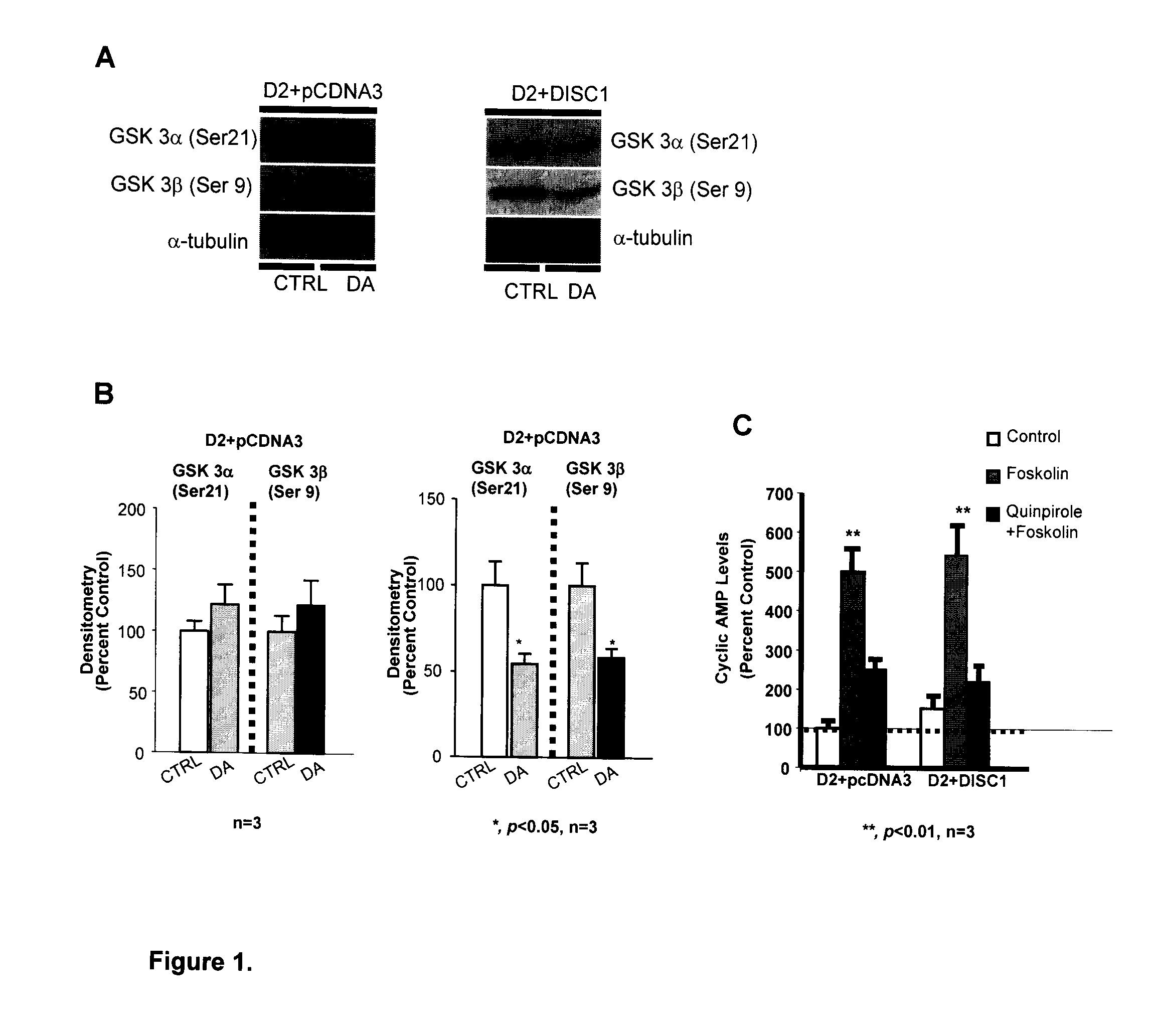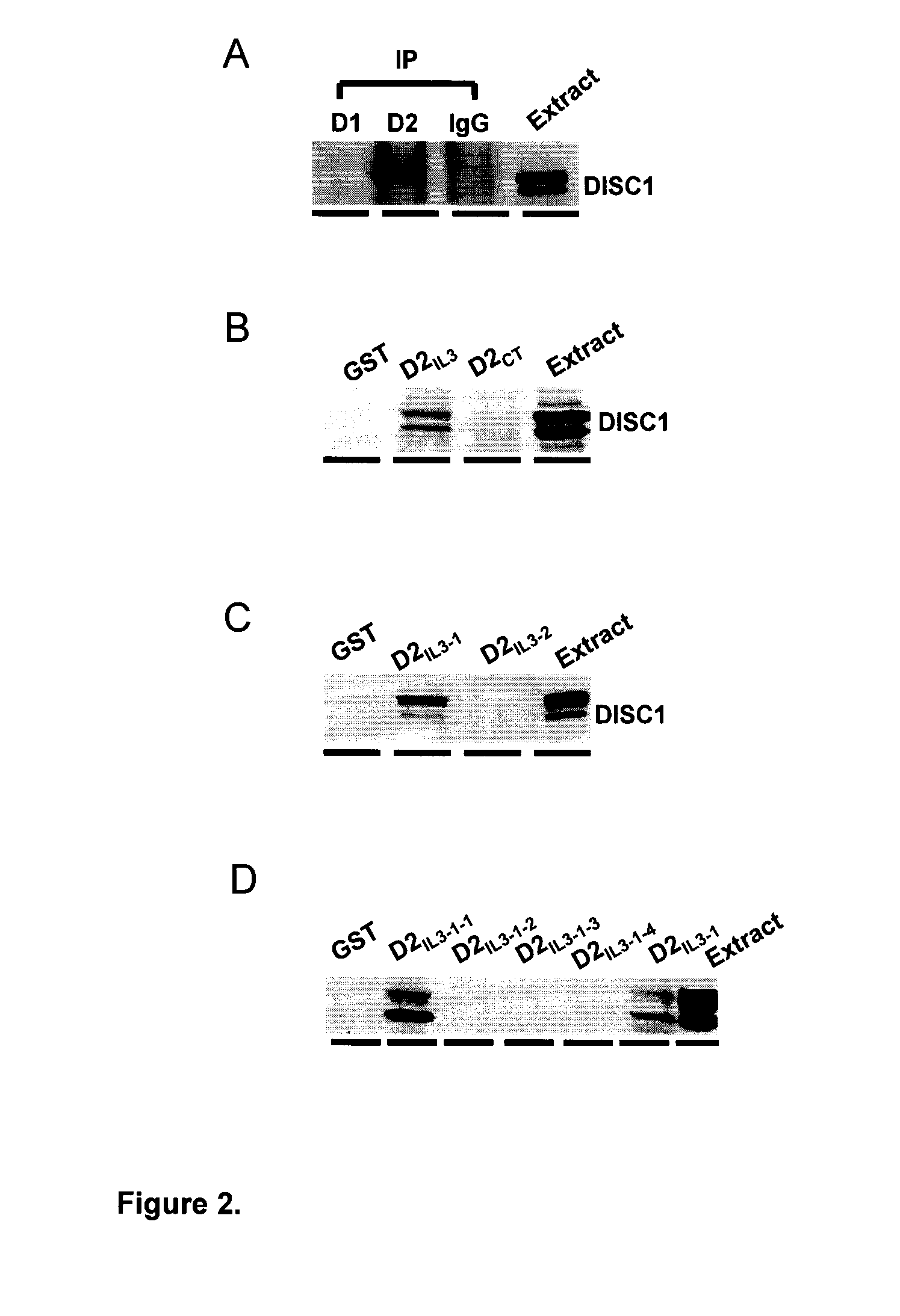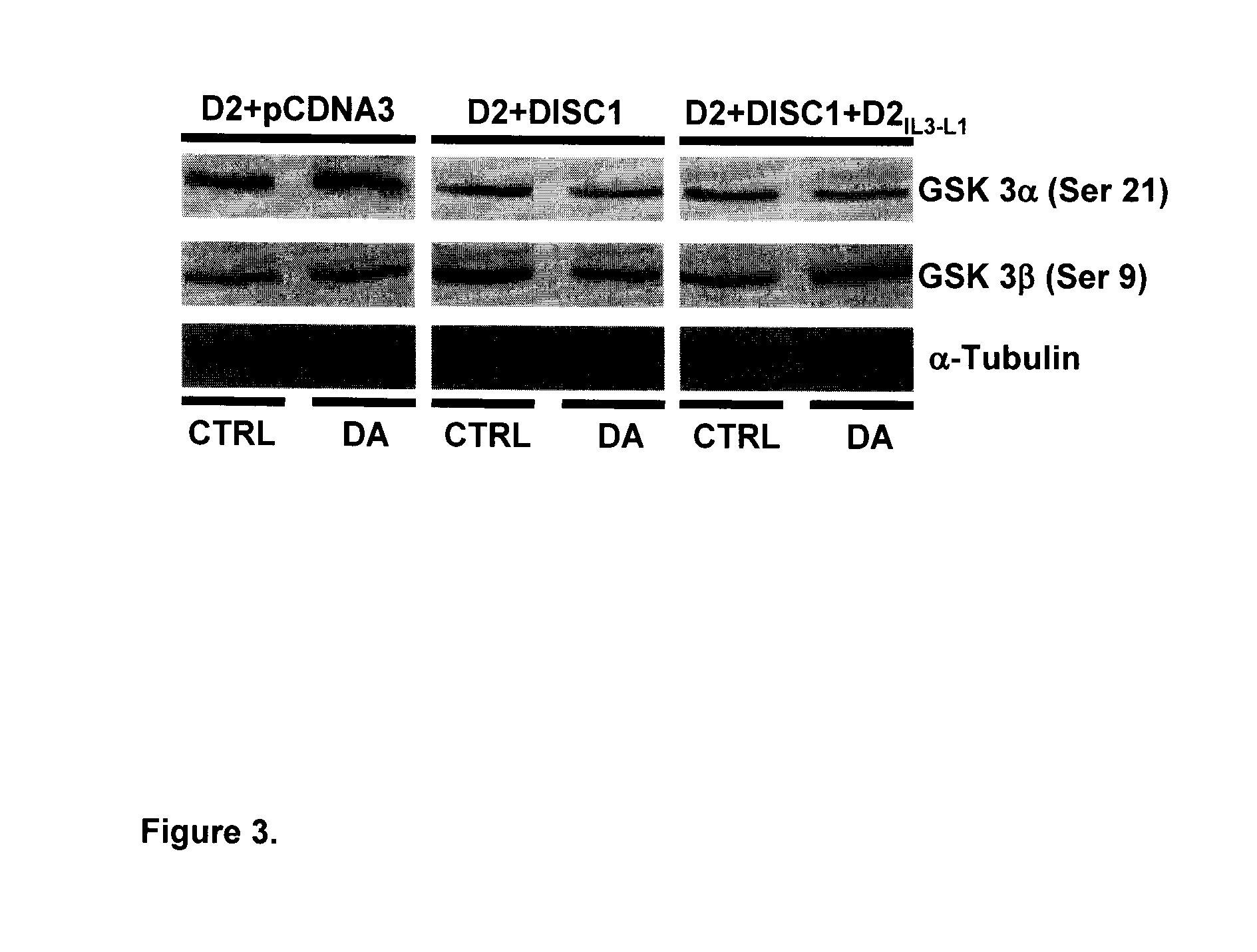Dopamine d2 receptor-disc1 interaction, compositions and methods for modulating same
a technology which is applied in the field of compositions and methods for modulating the interaction of d2 receptor and disc1, and can solve problems such as unreplicable studies
- Summary
- Abstract
- Description
- Claims
- Application Information
AI Technical Summary
Benefits of technology
Problems solved by technology
Method used
Image
Examples
example i
Activation of D2R Decreased GSK-3 Phosphorylation in HEK-293T Cells Co-Expressing DISC1 and D2R
[0071]Currently, all studies related to D2R-mediated Akt / GSK-3 signaling were carried out in brain tissue, where the expression of D2R and DISC1 was confirmed (11,89,99). At least to our knowledge, there are no studies of D2R-mediated Akt / GSK-3 signaling in HEK-293T cells. Furthermore, there is no evidence indicating the existence of endogenous DISC1 in HEK-293T cells. Thus, an initial step to investigate whether DISC1 is involved in D2R-mediated Akt / GSK-3 signaling is to compare the activation of D2R-induced reduction of GSK-3 phosphorylation in HEK-293T cells co-expressing DISC1 and D2R with that in HEK-293T cells expressing D2R with pcDNA3—the mammalian expression vector in which DISC1 is subcloned. We have initially chosen to use D2L instead of D2S based on previous studies that have shown that the D2S is the predominant presynaptic D2R while D2L is preferentially involved in postsynap...
example ii
DISC1 Forms a Protein Complex with D2R
[0073]As discussed previously, D2R function can be regulated by D2R-interacting proteins. Thus, in an attempt to define the structural basis for the observed reduction of GSK3α / β phosphorylation when DISC1, is co-expressed with D2R, we hypothesized that D2R and DISC1 may form a protein complex and this D2-DISC1 protein-protein interaction may be responsible for the observed effect of DISC1 co-expression on GSK3α / β phosphorylation. As shown in FIG. 2A, we have identified the existence of a D2R: DISC1 complex in rat striatal tissue using co-immunoprecipitation method with primary antibody against D2R. In contrast, D1R antibody failed to co-immunoprecipitate with DISC1, while the direct immunoprecipitation of D1R verified both D1R expression and the efficiency of the antibody for Immunoprecipitation (data not shown).
example iii
Identification of the Specific Region(s) of the D2R that Enable D2R and DISC1 to Form a Complex Using Affinity Purification
[0074]This method uses GST fusion proteins encoding the fragments of a test protein to affinity purify other proteins that may form complexes with the test protein in tissue from a specific brain region. Since DISC1 is an intracellular protein, we made GST-fusion proteins encoding two intracellular regions of D2R: the carboxyl tail (CT) of D2R (D2CT: T428-C443) and the third intracellular loop (ID) of D2R (D2IL3: K211-Q373). Many dopamine receptor interacting proteins have been identified that interact with either the CT or the IL3 region of dopamine receptors (94). Using the affinity purification method, we determined that the site responsible for D2R-DISC1 complex formation is limited to the third intracellular region of D2R, since only GST-D2IL3, but not GST-D2CT or GST alone, recognizes and precipitates DISC1 from solubilized striatal tissues (FIG. 2B). To c...
PUM
| Property | Measurement | Unit |
|---|---|---|
| thermal melting point | aaaaa | aaaaa |
| temperature | aaaaa | aaaaa |
| nucleic acid | aaaaa | aaaaa |
Abstract
Description
Claims
Application Information
 Login to View More
Login to View More - R&D
- Intellectual Property
- Life Sciences
- Materials
- Tech Scout
- Unparalleled Data Quality
- Higher Quality Content
- 60% Fewer Hallucinations
Browse by: Latest US Patents, China's latest patents, Technical Efficacy Thesaurus, Application Domain, Technology Topic, Popular Technical Reports.
© 2025 PatSnap. All rights reserved.Legal|Privacy policy|Modern Slavery Act Transparency Statement|Sitemap|About US| Contact US: help@patsnap.com



